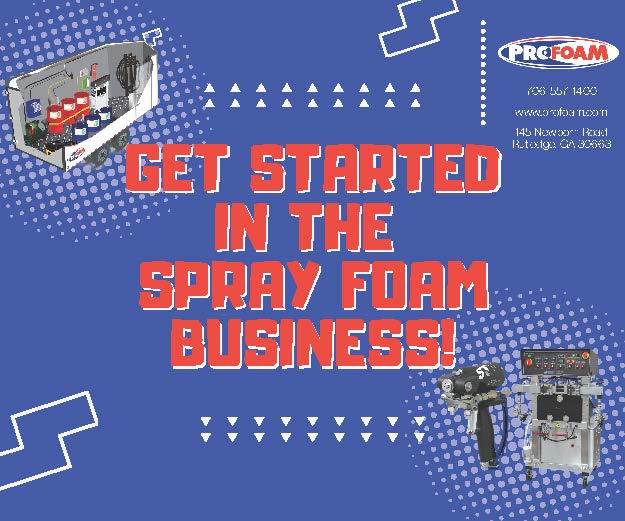
Spare Parts / Auxiliary Equipment
Heated Hoses
Getting the heated Side A & Side B materials from the proportioner to the spray gun requires specialized hoses through which the material is transferred, being heated along the way to maintain the desired temperature. Heated hose is generally available in 25, 50, or 100-foot lengths, and feature heating elements, temperature controllers, insulation, and protective jackets to prevent puncturing.
Heated hose systems can reach prodigious lengths, and often that’s a necessity in the spray foam industry. For example, in commercial roofing applications, it isn’t always feasible to maneuver a spray rig close to where the spray area is located, so it’s not uncommon to see total hose lengths of up to 400 feet (four 100-foot sections of hose). But that’s not to say that project specifics determine the length of heated hose used for a given application. In fact, it’s the performance characteristics of the proportioner that define the maximum hose length.
Because heated hoses don’t actually heat up the material, but rather prevent the material from cooling down too much as it’s pumped through the hose, it’s the job of the proportioner to raise the materials’ temperatures sufficiently high enough to reach the end of the hose length in the optimal temperature range. So, less powerful proportioners might have max hose lengths of 200 feet, while proportioners intended for commercial and industrial applications can handle hoses twice that long.
Auxiliary Equipment
In addition to proportioners, spray guns, and heated hoses, you will typically find much more equipment and power utilities involved before, during, and after a spray foam application.
Prior to spraying foam, the substrate might need to be prepared to optimize adhesion. Surface prep might require power-washing or abrasive-blasting equipment. Also, a substrate might need to be primed, which entails the use of single-component airless sprayers.
Obviously, powered equipment used in an SPF application requires electricity, which is typically supplied by a mobile generator, unless power is available at the job site. The generator needs to be properly sized, which is to say powerful enough to handle the full load amperage draw of all powered application equipment.
Several pieces of equipment in a typical SPF rig are pneumatic, or require air to operate. This equipment can include the spray guns and the transfer pumps that supply the material to the machines from the 55-gallon drums. To address this need, most spray foam equipment systems include electric air compressors to supply compressed air to the pneumatic equipment as needed during an application.






